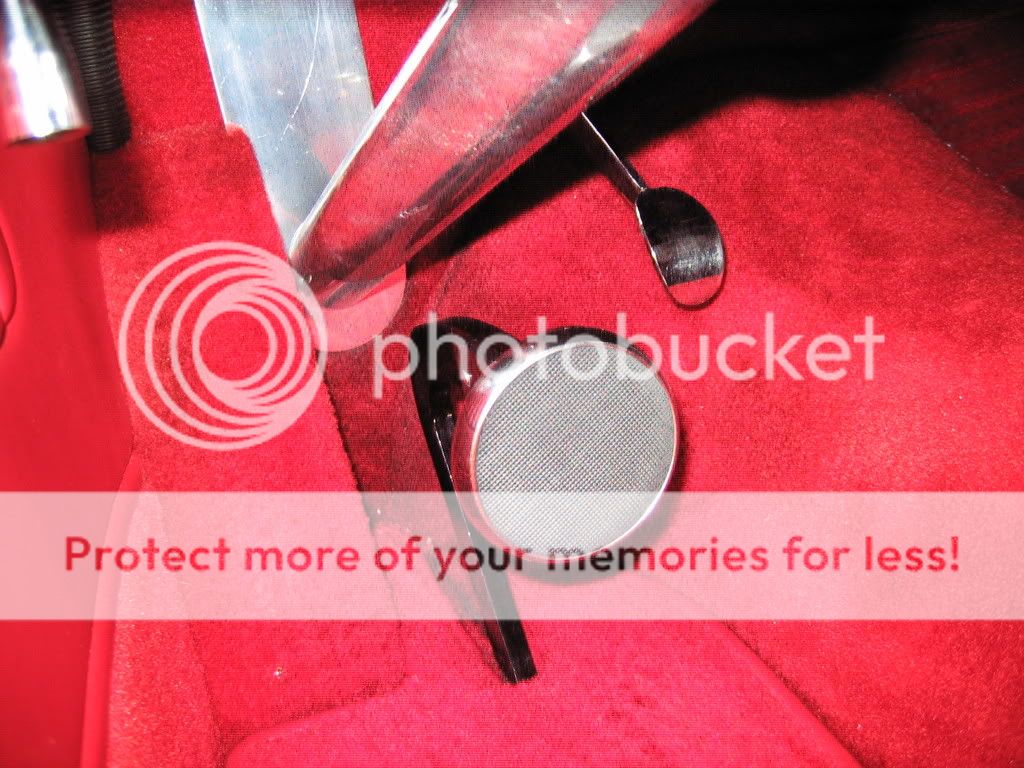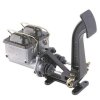Heres another option for folks having room problems for their brakes....hope this helps someone out there....
ABS Electric Power Brake System - AMP Up Your Brakes
Written by Ron Ceridono on July 1, 2010Bring Your Hot Rod To A Halt With An Electric Booster

View All 8 Photos
SHARE THIS ARTICLE

2/8The ABS electric power brake system generates enough stopping power to bring not only one '57 Ford to a stop but two. Gary Long's Ranchero stops quickly and predictably with or without his blown '57 'Bird tagging along.
Today most street rods have plenty of horsepower to get them going, but they don't always have commensurate stopping power. Ironically, the problem often turns out not to be the brakes themselves, but the hydraulic system that activates them. To improve stopping power it's not unusual for street rods to be equipped with vacuum power boosters, particularly when disc brakes are employed, however sometimes the results don't meet the expectations.
Vacuum boosters use the difference between atmospheric pressure and the engine's manifold vacuum to increase the force delivered to the master cylinder from the pedal. How much of an increase is dependent on two factors: manifold vacuum and the effective size of the diaphragm in the booster. With all things equal (vacuum, pedal ratio, master cylinder bore), an 11-inch booster will raise the pressure in the system as much as three times more than a 7-inch booster. Unfortunately, the tight confines of most street rod engine compartments, or the under floor area that most master cylinders are relegated to, can make it difficult to fit an appropriately sized power unit. However, now there is an alternative to a large-diameter booster for big gains in hydraulic pressure in the form of an electric power brake unit from ABS.

3/8The accumulator attaches to a junction block. The entire assembly is then secured to the car with a single bolt.
Found on a number of contemporary high-end automobiles, electric power brakes are proven to be effective and reliable. No vacuum or belt-driven pumps are required and the entire ABS system consists of three components-a compact electric power supply, a special master cylinder, and an accumulator, which is the source of the boost for the braking system. Measuring only 8x6x6 inches, the power unit can be hidden anywhere in the vehicle, in any orientation, just so long as it is below the brake fluid reservoir. It has two hydraulic connections, the gravity feed from the reservoir and the high-pressure assist line that gets plumbed back to the port on the master cylinder with the accumulator inline. The integral pressure switch and relay come pre-wired, requiring only a ground, a battery connection, and a keyed ignition connection. According to ABS the pump draws 14 amps at maximum pressure and is quieter than most aftermarket electric fuel pumps. The unique master cylinder has a 1-3/16-inch bore, which means the fluid volume is adequate for the most complex systems with multi-piston calipers, while still being able to create 1,600- to 1,800-psi brake line pressure during normal operation and over 2,000 psi at maximum output. Finally there's a hydraulic accumulator that provides for very smooth actuation of the brakes. It also provides reserve pressure to assist the brakes if for some reason the electrical power to the pump is interrupted. The accumulator will supply pressure for as many as 20 brake applications, after that the brakes function as though they were non-boosted. In operation, fluid is delivered from the master cylinder reservoir to an electric pump where it is pressurized and delivered to an accumulator. When the driver steps on the brake pedal and the pushrod moves forward, a valve inside the master cylinder opens and pressurized fluid from the accumulator enters a chamber in the master cylinder behind the piston assembly and helps apply the brakes. A switch monitors the pressure in the accumulator, and turns on the electric pump when pressure drops below a preset minimum and shuts it off when pressure is back up to a preset maximum.

4/8A polished aluminum master cylinder is more or less the brain of the system. Note is has four ports: furthest away from the pushrod is the outlet for the rear brakes, next is the outlet for the front brakes, the third is the inlet for pressurized fluid from the accumulator, and the vertical fitting nearest to the pushrod is the feed supplying fluid from the reservoir to the pump.cylinder
Installing the ABS electric brake booster system is easy enough; the master cylinder is adaptable to most pedal mounts and the only real concern is keeping the reservoir above the pump to provide it with gravity-fed fluid. In cases where the master cylinder is mounted below the floor, remote reservoirs are available. The pump and accumulator can be mounted in virtually any location, then it's simply a matter of connecting all the components with fluid lines. Once in place, ABS recommends DOT5 silicone brake fluid, although the system will work perfectly with DOT3 or DOT4 fluid.

5/8This little device is an accumulator-it stores pressure to provided hydraulic assistance to the master cylinder. Even with the pump off, the system is pressurized.
Electric power brakes are a great option for any application but particularly those with engines that have low manifold vacuum or when the space for a large vacuum booster isn't available. ABS can not only supply the electric booster system, but disc brake kits, hardware, valves, and anything else you made need to bring your hot rod to a halt.
SOURCES
ABS Power Brake
Orange, CA 92866
714-771-6549
www.abspowerbrake.com









